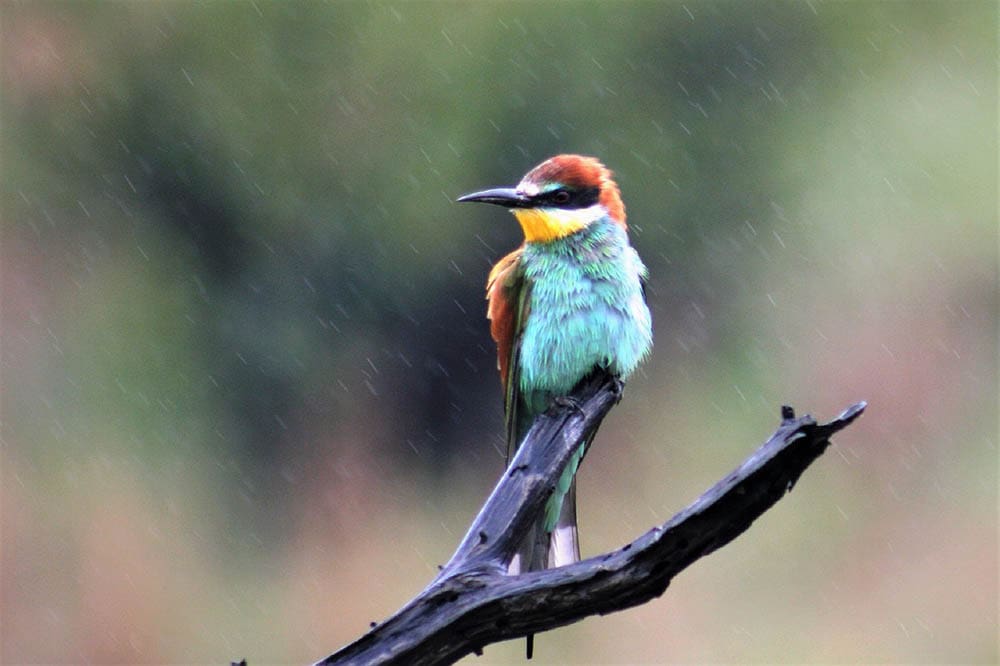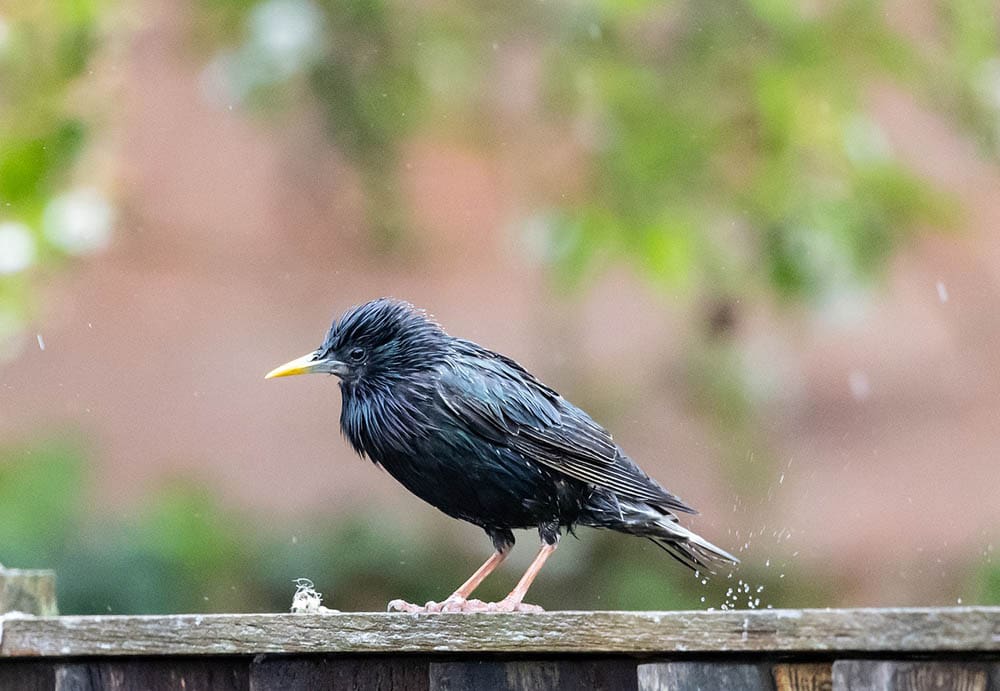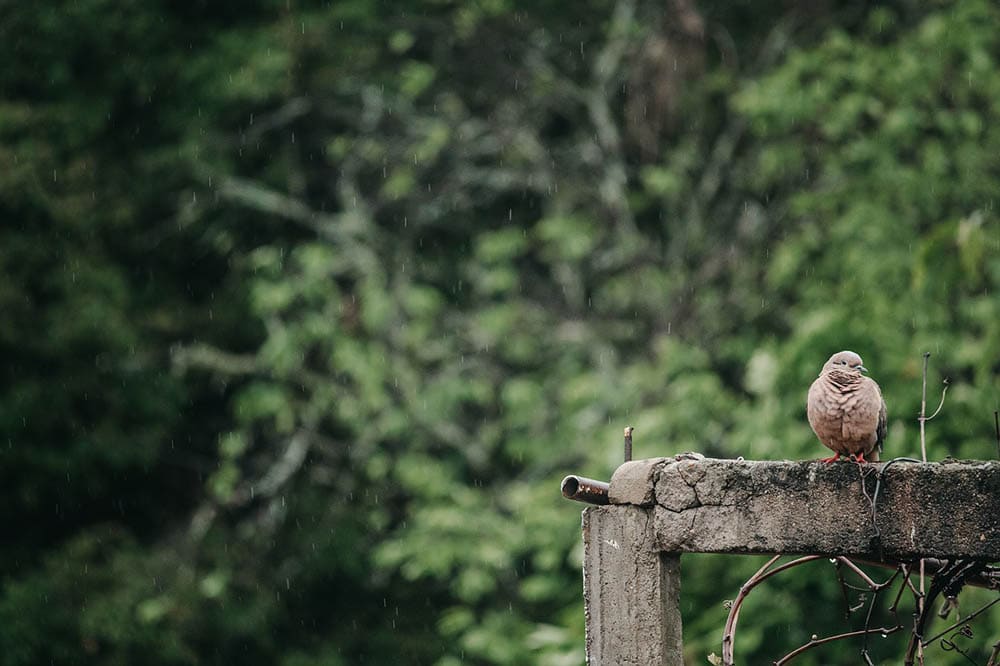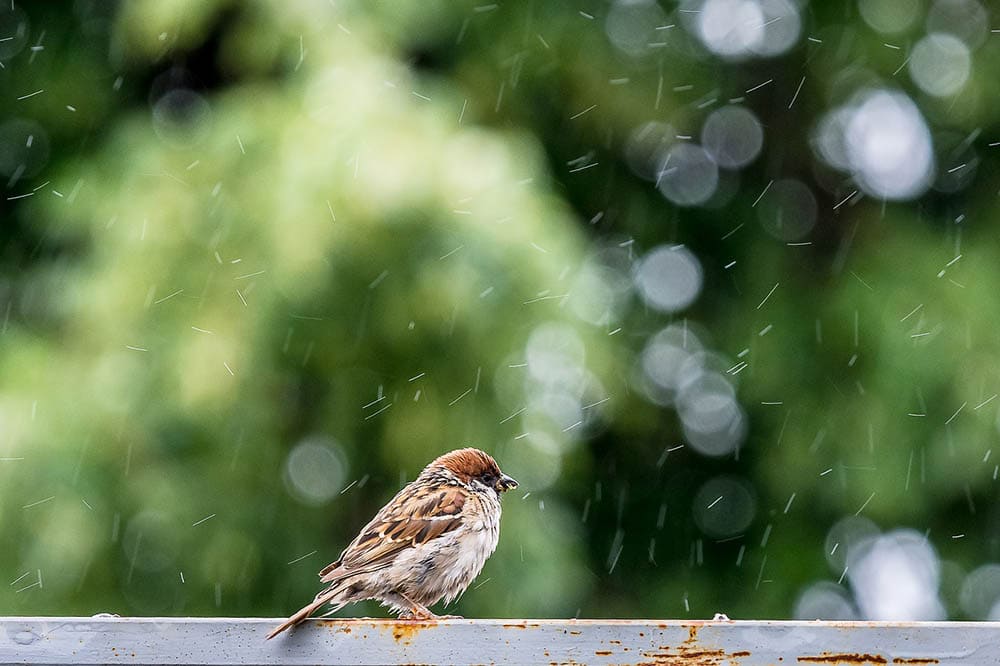Where Do Birds Go When It Rains? (Facts, & FAQ)
Last Updated on

It seems like the world’s weather is getting more unpredictable every year. Countries are getting pummeled with droughts, wildfires, floods, and every natural disaster in between. Animals can take shelter from extreme weather in many different places, but a bird can’t do much when their method of transportation—flying—is affected by rain or wind.
You might wonder how birds can survive in periods of severe rain. Where do they wind up when the weather gets bad? Keep reading to find the answer to this question and more.

How Land Birds Fare in the Rain
Light rain will not affect most birds. Their feathers are designed to shed rainwater and keep air close to their bodies to stay warm. Heavy rain, however, will prompt a land bird to seek shelter. They will often take cover in areas like bushes, reads, and under eaves.
Smaller birds can become vulnerable in periods of prolonged rain. They can sit out for a light afternoon shower, but they can’t take cover during a weeklong storm and survive. Heavy storms during their breeding season can also be more damaging to the population than storms during any other time of the year.

How Sea Birds Fare in the Rain
Seabirds, especially larger ones, will often ride out a storm at sea. Smaller seabirds, though, are not as well equipped to fly against the storm and could easily be overpowered by it. They will seek shelter on land until the storm has passed.
If you see a seabird sheltering from a storm, it’s not necessarily due to the rain, but instead the unpredictable nature of the storm. If you happen to see seaboards along the coast that you don’t usually see near land, there may be a storm approaching over the horizon.
How Birds Protect Themselves in Storms
Bird feathers provide great insulation. The down feathers located underneath most birds’ contour features trap air which allows the warmth to stay close to the bird’s body and prevents cold air from getting too close to the skin. Birds who live in cold climates will have even thicker plumage during the winter months. They’ll shed this plumage during the fall and spring in a process known as molting.
Certain species of birds have “powder down”, which are fine granules that arise from the decomposition of their down feathers. This powder down can repel water.
Birds have a translucent membrane in their eyes called the ‘third eyelid.’ This membrane adds a layer of protection against rain.
The preen glands in seabirds produce oil that makes their feathers watertight. You may have seen birds in the wild reaching over their back like it was scratching an itch on their tail, but what they are doing is squeezing the oil from the preen glands to spread it all over themselves.
There is a tendon in their legs that causes birds’ toes to curl when they’re perched on something. This mechanism provides them with a tight hold onto branches or perches when faced with windy weather.

How Mothers Protect Their Babies
Baby birds are not born with their water-resistant feathers so they’re at risk during any type of rainstorm. They cannot keep water out or keep heat close to their bodies. Since they’re so small and fragile during their first few weeks of life, they cannot afford to lose much heat in a storm.
Mother birds instinctively know that their babies rely on them for protection in such weather, so they use their feathers to cover them. This creates a warm and insulating layer that will allow their babies to stay safe and dry.
Mother birds face significant challenges in periods of intense rainfall. Since they cannot leave their babies unattended, they are not able to forage for food. Some mothers will leave their babies at this point, putting them at risk of death. Many baby birds will not survive in periods of prolonged rainfall unless they have a full shelter available to them.
Some Birds Enjoy the Rain
Some birds find that rainstorms become an opportunity. Ducks, for example, use flooded fields as new territory. It’s not unusual to find ducks sitting out in the open during the rain, preening their feathers, and even playing in the puddles. Ducks and swans are both able to sleep on water or land regardless of the weather.
Rainfall will bring out more insect larvae, too, which provide an excellent meal for ducks.

Do Birds Fly in The Rain?
Birds can fly in the rain, but they cannot do it very well. You might see birds flying very short distances in bad weather so they can find something to eat, but most birds choose to lay low and ride out the storm.
Small birds find it more difficult to cope with heavy periods of rainfall than larger birds. Their wings get saturated with rain which makes them too heavy to operate. Small birds are also at risk of developing hypothermia if they spend too much time in the rain.
While hypothermia is less of a concern for larger birds, flying in the rain is still difficult for them. Heavy rain can make it impossible for birds to see where they’re flying and can knock them off course entirely.
While being pelted by raindrops does make it difficult to fly, there is another reason why most birds choose not to take flight during a storm. The drop in air pressure makes the air less dense, and it is the higher density that gives birds the lift they need to fly.
Related Read: Where Do Birds Go During a Hurricane? The Surprising Answer!

Conclusion
So, where do birds go when it rains? It depends on a lot of factors – the size of the bird, the amount of rainfall, whether it is a land or sea bird, and how heavy the rain is falling, but is there a way you can protect your neighborhood birds during a storm?
While most birds can fend well for themselves in inclement weather, there are some things you can do as a homeowner to help protect your neighborhood birds in the event of a rainstorm.
Install screens on the outside of your windows to prevent reflections. As you learned already, heavy rainfall can make it difficult for birds to see as they’re flying. If your windows are screened on the outside, they’ll be less likely to fly into them and hurt themselves.
Keep your pets indoors. In the United States alone, cats are responsible for billions of bird deaths every year.
Fill your garden with plenty of native plants and bushes to provide shelter for birds. White pine, holly, and arborvitae are great for year-round shelter.
Build or buy a birdhouse and position it up high. We recommend installing the house on a metal pole as trees can be easily accessible by predators. Don’t place it too close to a birdfeeder as they can often entice predators.
Featured Image Credit: Nel_Botha-NZ, Pixabay
About the Author Chantelle Fowler
Chantelle grew up on the prairies in Canada surrounded by animals. Chantelle, her husband, and their child take great pride in being great animal parents. When Chantelle isn’t snuggling her cats on the couch or taking pictures of them being hilarious, she’s outside exploring in the Rocky Mountains, binging the same shows on Netflix over and over, and reading about whatever random topic pops into her brain.
Related Articles:
When Were Binoculars Invented? History, Today & Future
10 Types of Hummingbirds in Arkansas (With Pictures)
8 Types of Hummingbirds in Nebraska (With Pictures)
5 Types of Hummingbirds in Idaho (With Pictures)
3 Types of Hummingbirds in Mississippi (With Pictures)
8 Types of Hummingbirds in Kansas (With Pictures)
5 Types of Hummingbirds in West Virginia (With Pictures)
5 Types of Hummingbirds in Ohio (With Pictures)
